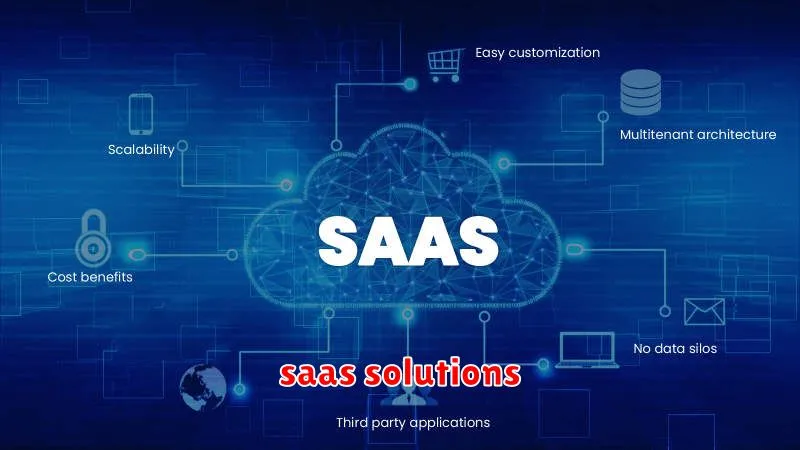In today’s digital landscape, businesses are constantly seeking ways to streamline operations, enhance productivity, and gain a competitive edge. SaaS solutions have emerged as a game-changer, providing businesses with access to powerful tools and services that can empower growth and innovation. From customer relationship management (CRM) to marketing automation, financial management, and more, SaaS platforms offer a wide range of functionalities to address specific business needs.
By embracing SaaS solutions, businesses can unlock a wealth of benefits, including improved efficiency, cost savings, enhanced collaboration, and access to real-time data insights. This article will delve into the transformative power of SaaS and explore how it is revolutionizing the way businesses operate and thrive in the modern era.
Understanding SaaS: A Cloud-Based Software Delivery Model
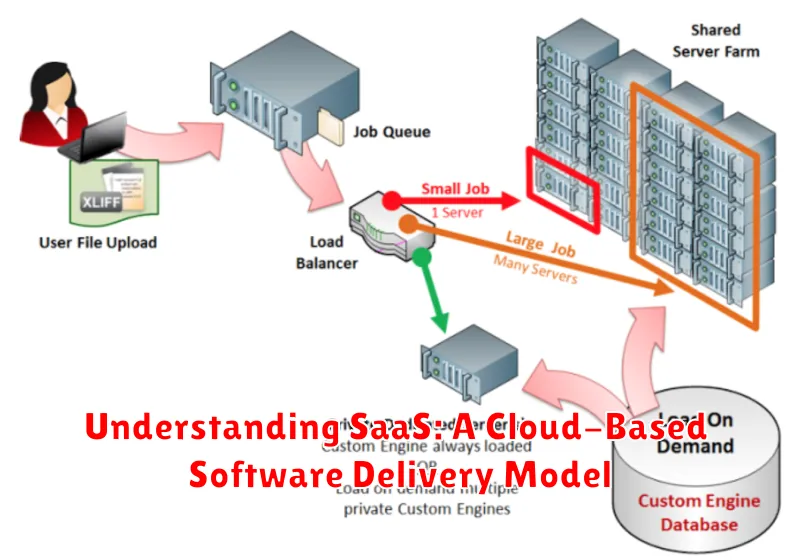
In today’s digital landscape, businesses are constantly seeking ways to streamline operations, enhance efficiency, and gain a competitive edge. Software as a Service (SaaS) has emerged as a transformative solution, revolutionizing the way software is delivered and consumed.
At its core, SaaS represents a cloud-based software delivery model where applications are hosted on remote servers and accessed by users over the internet. Unlike traditional on-premise software, which requires installation and maintenance on individual computers, SaaS solutions are centrally managed by the vendor, eliminating the need for complex infrastructure and IT expertise.
This cloud-based approach offers numerous benefits, including:
- Reduced Costs: SaaS eliminates the upfront expenses associated with hardware, software licensing, and IT infrastructure. Users pay a recurring subscription fee, which often includes maintenance, updates, and technical support.
- Scalability and Flexibility: SaaS applications can be easily scaled up or down to meet changing business needs, ensuring that users have access to the resources they require.
- Accessibility and Collaboration: SaaS applications are accessible from any device with an internet connection, fostering collaboration and improving team productivity.
- Automatic Updates and Upgrades: SaaS vendors are responsible for maintaining and updating their applications, ensuring that users always have access to the latest features and security patches.
- Enhanced Security: Cloud providers invest heavily in security measures to protect sensitive data, offering a more secure environment than many on-premise solutions.
From CRM and marketing automation to accounting and project management, SaaS solutions are transforming a wide range of business functions. Their ease of use, affordability, and innovative capabilities make them an attractive option for businesses of all sizes.
Benefits of SaaS for Businesses of All Sizes
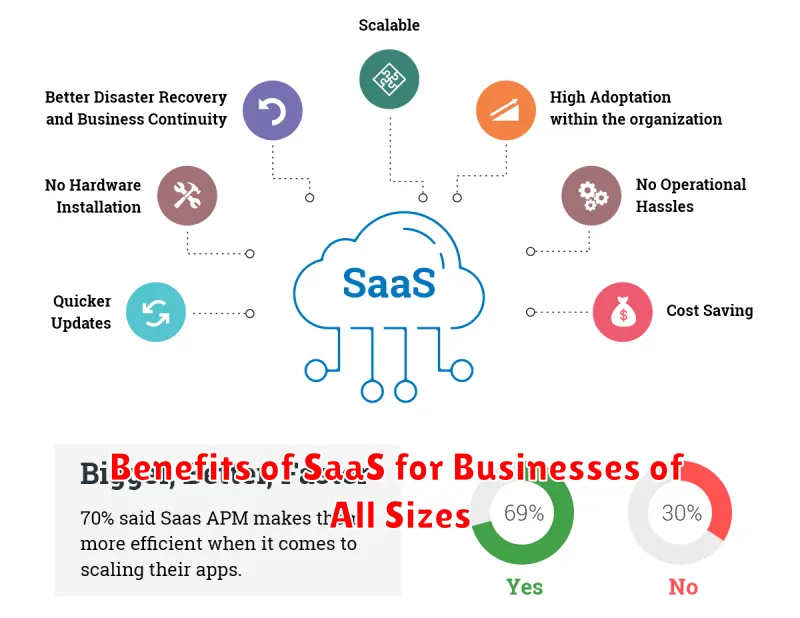
In today’s fast-paced digital landscape, businesses of all sizes are constantly seeking ways to streamline operations, enhance efficiency, and gain a competitive edge. Software as a Service (SaaS) has emerged as a game-changer, providing a wide range of benefits that can empower organizations for growth and innovation.
Cost-Effectiveness is a primary advantage of SaaS. By subscribing to cloud-based software, businesses can eliminate the upfront costs associated with traditional software purchases, such as licensing fees, hardware investments, and installation expenses. This cost-effective approach allows organizations to allocate their budget more strategically, focusing on core operations and growth initiatives.
Scalability is another crucial benefit of SaaS. As businesses grow and their needs evolve, SaaS solutions can easily scale to accommodate increasing workloads and user demands. This eliminates the need for expensive hardware upgrades or software re-architecting, ensuring seamless growth and operational efficiency.
Accessibility and Collaboration are significantly enhanced by SaaS. Employees can access applications and data from anywhere with an internet connection, enabling remote work and fostering collaboration across teams and locations. This flexibility and accessibility empower organizations to operate efficiently and maintain productivity regardless of geographical constraints.
Security and Updates are handled by SaaS providers, offering peace of mind to businesses. Providers are responsible for maintaining data security, infrastructure management, and software updates, ensuring that organizations benefit from the latest features and security patches without requiring internal resources or expertise.
In conclusion, SaaS solutions offer a compelling advantage for businesses of all sizes. From cost-effectiveness and scalability to enhanced accessibility and security, SaaS empowers organizations to streamline operations, drive innovation, and achieve their growth objectives in today’s dynamic business environment.
Key Considerations When Choosing a SaaS Solution
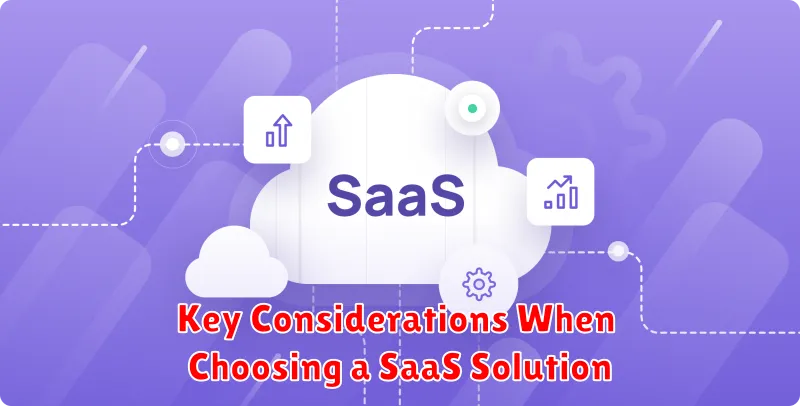
Software as a Service (SaaS) solutions are transforming how businesses operate. These cloud-based applications offer numerous benefits, including cost-effectiveness, scalability, and accessibility. However, choosing the right SaaS solution can be a daunting task. To make an informed decision, it’s crucial to consider several key factors.
1. Define Your Needs and Requirements
Before evaluating SaaS solutions, it’s essential to clearly understand your business needs and requirements. Identify the specific functionalities and features that are crucial for your operations. Consider factors such as:
- Industry-specific requirements: Do you need specialized features tailored to your industry?
- User roles and access levels: How many users will be accessing the solution? Do you need different permission levels?
- Integration with existing systems: Will the SaaS solution seamlessly integrate with your current software?
- Scalability and growth potential: Can the solution accommodate future growth and expansion?
2. Evaluate Features and Functionality
Once you’ve defined your needs, evaluate the features and functionality offered by different SaaS solutions. Look for solutions that provide the necessary tools to address your specific requirements. Consider factors such as:
- Core functionalities: Does the solution offer all the essential features you need?
- Customization options: Can you customize the solution to fit your workflow and preferences?
- User interface (UI) and user experience (UX): Is the solution easy to use and navigate?
- Reporting and analytics: Does the solution provide insightful data and analytics?
3. Consider Pricing and Value
Pricing is an essential factor in any SaaS decision. Different solutions offer various pricing models, including subscription-based plans, per-user fees, and tiered pricing. Consider factors such as:
- Pricing structure: What are the different pricing tiers and features included in each?
- Value for money: Does the price align with the features and benefits offered?
- Hidden costs: Are there any additional charges for features or support?
4. Assess Vendor Reputation and Support
The vendor’s reputation and support services are crucial for a successful SaaS implementation. Look for vendors with a proven track record, reliable customer support, and a strong commitment to ongoing product development. Consider factors such as:
- Customer testimonials and reviews: What do other customers say about the vendor and the solution?
- Support channels: What support options are available, such as phone, email, or live chat?
- Service level agreements (SLAs): What level of support and uptime are guaranteed?
5. Conduct a Trial or Demo
Before making a final decision, request a trial or demo of the SaaS solution. This allows you to experience the solution firsthand and evaluate its functionality and user experience. It also provides an opportunity to ask questions and get a feel for the vendor’s support team.
6. Secure Data and Privacy
Data security and privacy are paramount considerations for any SaaS solution. Ensure the vendor has robust security measures in place to protect your data. Consider factors such as:
- Data encryption: Is data encrypted both in transit and at rest?
- Access control: Are there strict access controls to prevent unauthorized access?
- Compliance certifications: Does the vendor comply with relevant data privacy regulations?
By carefully considering these key factors, you can choose the best SaaS solution to empower your business for growth and innovation.
Popular SaaS Applications for Various Business Functions
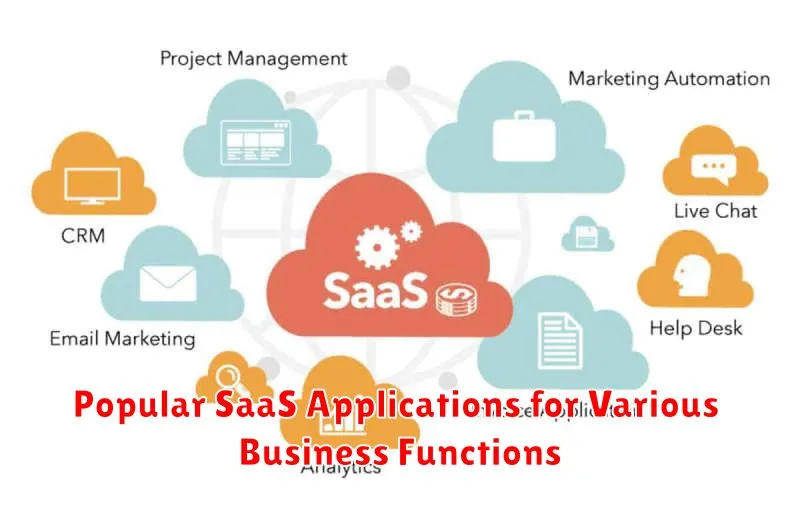
In today’s digital landscape, Software as a Service (SaaS) applications have become indispensable tools for businesses of all sizes. They offer a wide range of functionalities, enabling organizations to streamline operations, enhance productivity, and drive growth. From marketing and sales to finance and customer support, SaaS solutions cater to diverse business needs, empowering businesses to achieve their goals.
Marketing and Sales
SaaS applications have revolutionized the way businesses market and sell their products and services. Some popular options include:
- HubSpot: A comprehensive marketing automation platform that helps businesses attract, engage, and convert leads.
- Mailchimp: An email marketing platform that enables businesses to create and send personalized email campaigns.
- Salesforce: A customer relationship management (CRM) solution that helps businesses manage customer interactions and sales pipelines.
Finance and Accounting
SaaS applications simplify financial management and accounting processes. Key players in this space include:
- Xero: An online accounting software that helps businesses manage invoices, expenses, and bank reconciliations.
- QuickBooks Online: A cloud-based accounting solution that offers features like invoicing, payroll, and expense tracking.
- Zoho Books: A comprehensive accounting software that provides features for managing invoices, expenses, inventory, and more.
Human Resources
SaaS applications streamline HR processes, from recruitment and onboarding to performance management and payroll. Some popular choices include:
- BambooHR: A cloud-based HR software that helps businesses manage employee data, benefits, and performance.
- Workday: A comprehensive HR solution that provides features for recruiting, onboarding, payroll, and performance management.
- Greenhouse: A talent management platform that helps businesses recruit, screen, and hire top talent.
Customer Support and Service
SaaS applications empower businesses to provide exceptional customer support and service. Key players in this space include:
- Zendesk: A customer service platform that offers features like ticketing, live chat, and knowledge management.
- Intercom: A customer engagement platform that helps businesses communicate with customers across multiple channels.
- Freshdesk: A cloud-based customer support platform that offers features like ticketing, automation, and reporting.
Project Management
SaaS applications streamline project management, allowing businesses to manage tasks, deadlines, and resources efficiently. Some popular options include:
- Asana: A project management tool that helps teams collaborate and track progress on tasks and projects.
- Trello: A project management tool that uses boards, lists, and cards to visualize tasks and progress.
- Jira: A project management and bug tracking tool that is popular among software development teams.
SaaS applications offer businesses a wealth of benefits, including increased efficiency, reduced costs, improved collaboration, and enhanced productivity. By leveraging the right SaaS solutions, organizations can empower their teams, streamline operations, and drive innovation, ultimately achieving their business goals.
Integration and Customization: Tailoring SaaS to Your Needs
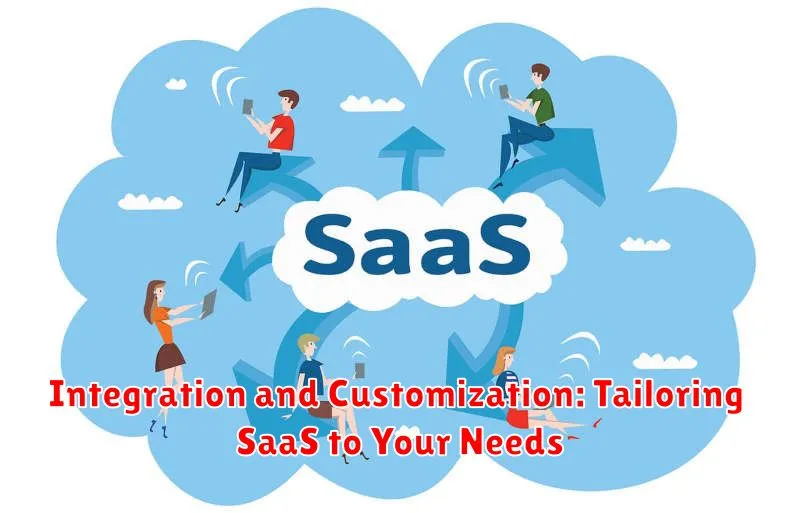
While the core functionality of SaaS solutions is often robust and well-designed, true empowerment comes from seamlessly integrating these tools into your existing workflows and tailoring them to your specific needs. This is where integration and customization play crucial roles, allowing businesses to truly optimize their SaaS investments.
Integration empowers businesses to connect their SaaS solutions with other vital systems, such as CRM, accounting software, or marketing platforms. This creates a unified ecosystem, reducing manual data entry, eliminating redundancy, and enabling real-time data sharing across departments. Imagine automating lead generation from your marketing platform directly into your CRM, ensuring consistent data and streamlined processes.
Customization, on the other hand, allows businesses to fine-tune their SaaS solutions to align perfectly with their unique workflows and processes. This could involve adjusting user interfaces, adding custom fields, or even integrating third-party applications. For instance, a sales team might customize their CRM to track specific metrics that are crucial for their success, ensuring data visibility and tailored insights.
The combination of integration and customization transforms SaaS solutions from mere tools to powerful engines of efficiency and growth. Businesses can streamline operations, automate tasks, and gain deeper insights into their data, ultimately driving innovation and achieving their goals.
Security and Compliance in the SaaS World
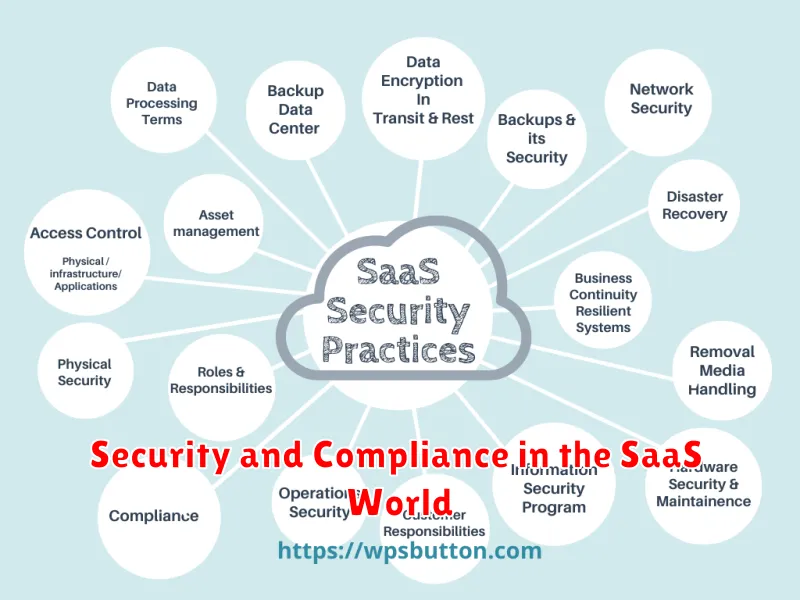
As businesses increasingly rely on SaaS solutions to drive growth and innovation, the importance of security and compliance becomes paramount. SaaS providers are entrusted with sensitive data, and ensuring its protection is essential for both the provider and its customers.
SaaS security encompasses a wide range of practices, including data encryption, access control, regular security audits, and incident response plans. These measures aim to safeguard data from unauthorized access, breaches, and other threats.
Compliance, on the other hand, ensures that SaaS providers adhere to industry-specific regulations and standards. This includes meeting requirements like GDPR, HIPAA, and PCI DSS, depending on the nature of the data being processed. Compliance demonstrates a commitment to responsible data handling and builds trust with customers.
Choosing a SaaS provider with a strong security and compliance posture is crucial for businesses. Look for providers who:
- Have robust security certifications and attestations
- Offer detailed information about their security practices
- Provide regular updates on security vulnerabilities
- Demonstrate a commitment to ongoing compliance
By prioritizing security and compliance, SaaS providers can foster a secure and trustworthy ecosystem for businesses to thrive in. This not only protects sensitive data but also builds confidence and allows companies to focus on their core operations.
Managing SaaS Subscriptions: Cost Optimization
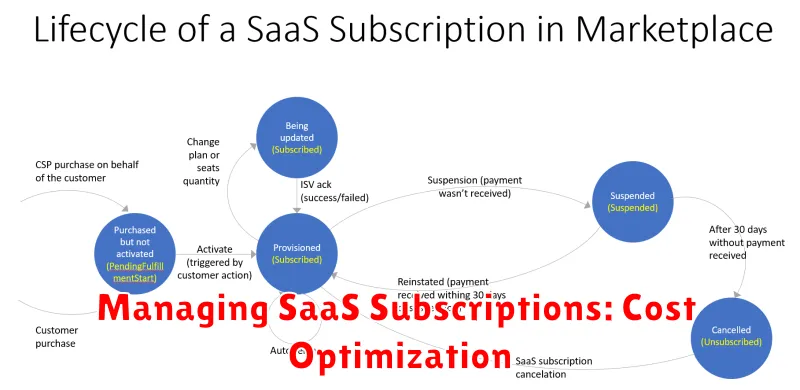
In the dynamic landscape of modern business, Software-as-a-Service (SaaS) solutions have become indispensable tools for growth and innovation. However, the proliferation of SaaS subscriptions can lead to escalating costs if not carefully managed. Cost optimization is paramount for maximizing ROI and ensuring sustainable business practices.
To effectively manage SaaS subscriptions and optimize costs, businesses can implement several strategies. First, conduct a thorough audit of all active subscriptions. This includes identifying unused or underutilized tools and services. Next, negotiate favorable pricing and contracts. Many vendors offer discounts for longer-term commitments or bundled packages.
Additionally, consider alternative solutions. Open-source or free alternatives can sometimes meet specific needs, reducing reliance on paid subscriptions. Furthermore, explore options for consolidating multiple subscriptions into a single platform or service. This can simplify management and potentially reduce overall costs.
Implementing automated tools for subscription management can streamline the process and prevent overspending. By tracking usage data and setting alerts for renewal periods, businesses can proactively manage subscriptions and avoid unnecessary charges.
Ultimately, cost optimization is an ongoing process. Regularly reviewing and adjusting subscription strategies is essential to ensure that SaaS investments align with business needs and financial goals.
The Future of SaaS: Trends and Predictions

The Software-as-a-Service (SaaS) market is rapidly evolving, with new technologies and trends emerging constantly. As businesses continue to adopt SaaS solutions to streamline operations and boost productivity, it’s crucial to understand the key trends that will shape the future of this industry.
One of the most significant trends is the rise of vertical SaaS. Instead of offering generic solutions, vertical SaaS providers cater to specific industries, such as healthcare, finance, or education. This specialization allows them to offer tailored solutions that meet the unique needs of each sector.
Another important trend is the increasing importance of artificial intelligence (AI) and machine learning (ML) in SaaS. AI and ML are being used to automate tasks, improve customer service, and provide valuable insights from data. This trend will only accelerate in the coming years, as these technologies become more sophisticated.
The future of SaaS will also be driven by the growth of cloud computing. As businesses continue to migrate their applications and data to the cloud, SaaS solutions will become even more integral to their operations. The cloud provides scalability, flexibility, and cost-effectiveness, making it an attractive option for businesses of all sizes.
Finally, we can expect to see a continued emphasis on security and privacy in the SaaS industry. As businesses rely more heavily on SaaS solutions, it’s crucial to ensure that their data is secure and protected from cyber threats. SaaS providers will need to invest in robust security measures and comply with industry regulations to maintain customer trust.
In conclusion, the future of SaaS is bright. As businesses continue to embrace cloud computing and adopt new technologies, the demand for SaaS solutions will only grow. By staying ahead of the trends and focusing on innovation, SaaS providers can position themselves for success in this dynamic and evolving market.
Case Studies: SaaS Success Stories

SaaS solutions are transforming the way businesses operate, offering a wealth of benefits that drive growth and innovation. To truly understand the impact of SaaS, let’s delve into some real-world case studies that showcase how businesses have harnessed the power of these solutions to achieve remarkable results.
Case Study 1: Streamlining Operations with a CRM Platform
A small marketing agency was struggling to manage their growing client base and track their interactions effectively. Implementing a cloud-based CRM platform allowed them to centralize customer data, automate tasks, and gain valuable insights into customer behavior. This resulted in improved customer service, increased sales conversion rates, and a significant boost in efficiency.
Case Study 2: Enhancing Collaboration with Project Management Software
A software development company was facing challenges with communication and project coordination among its distributed teams. Adopting a robust project management software facilitated seamless collaboration, improved task visibility, and streamlined workflows. The result was improved productivity, reduced project delays, and increased team satisfaction.
Case Study 3: Optimizing Marketing Efforts with Marketing Automation
An e-commerce store was looking to personalize their marketing campaigns and reach a wider audience. Implementing a marketing automation platform enabled them to segment their customer base, automate email campaigns, and track the effectiveness of their marketing efforts. This led to a significant increase in lead generation, improved customer engagement, and ultimately, higher sales.
These case studies demonstrate the transformative power of SaaS solutions in empowering businesses for growth and innovation. By embracing the right SaaS tools, businesses can streamline their operations, enhance collaboration, optimize marketing efforts, and ultimately achieve their strategic objectives.

